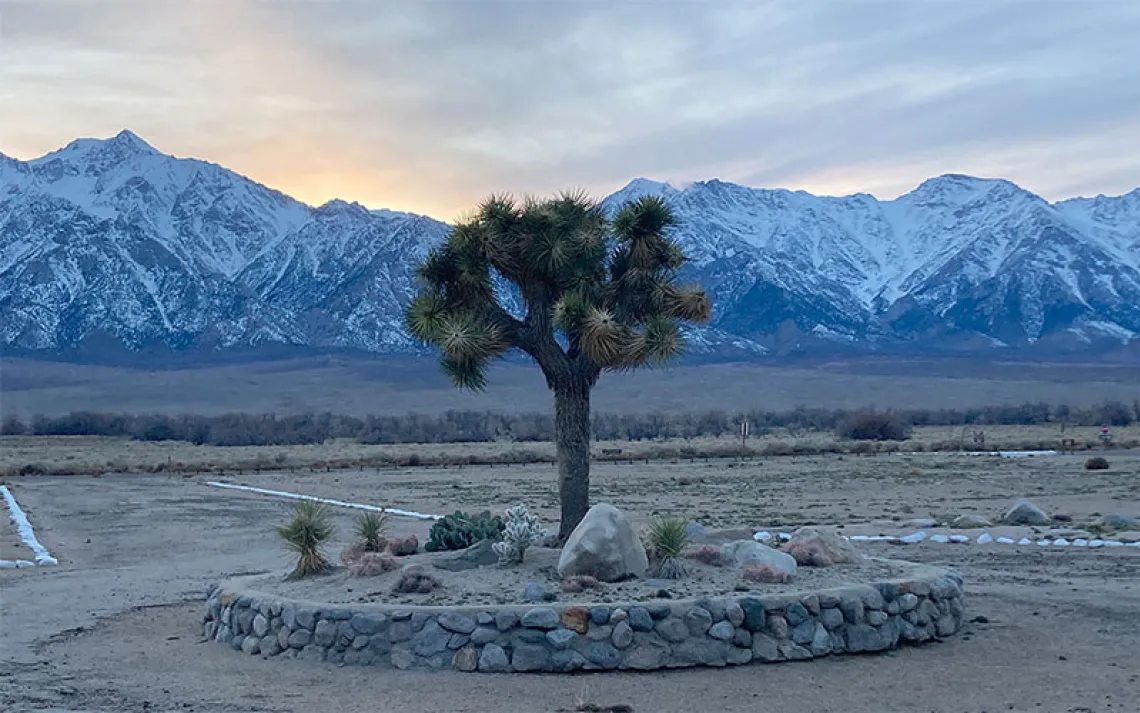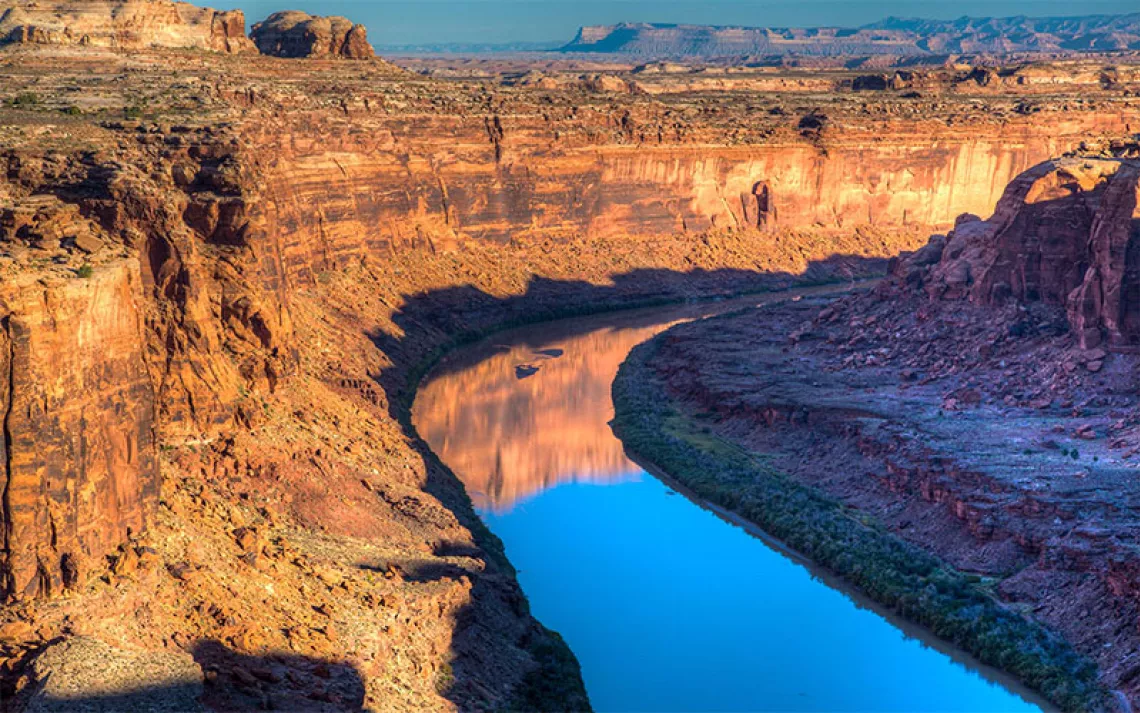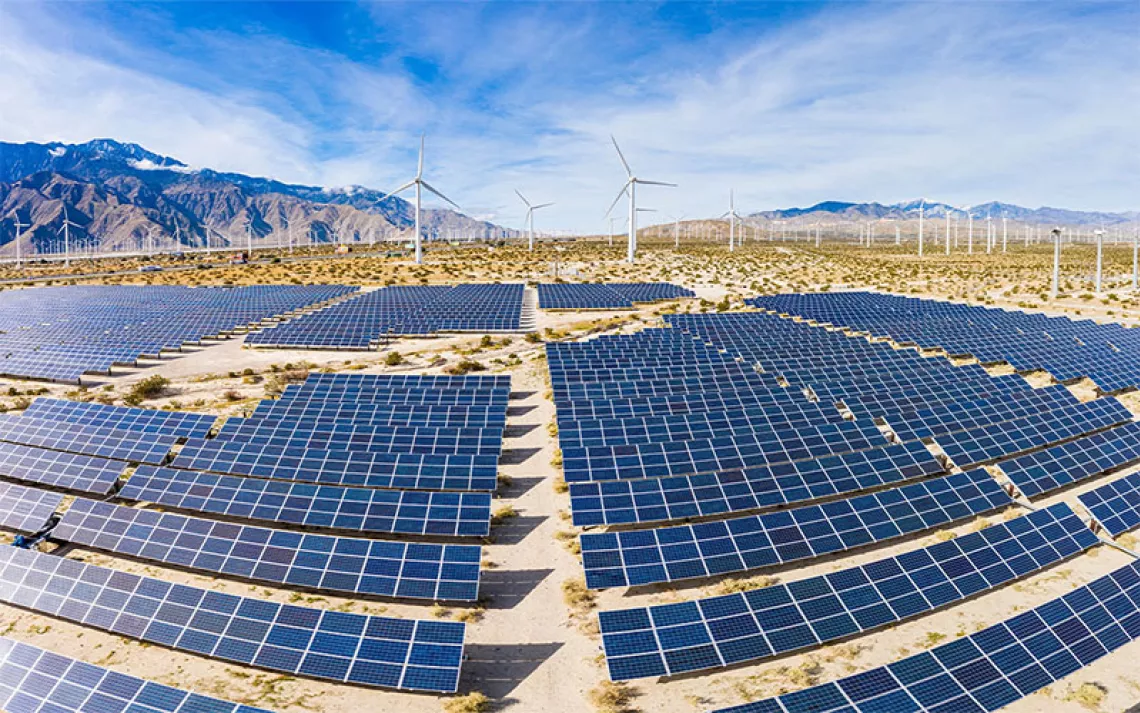Keeping Drones Out of the Wild
Park officials grapple with unmanned aircraft in natural areas

Illustration by Eugenia Lol
In November 2018, New York photographer Timothy McGurr caught a nighttime flight to Billings, Montana, drove four hours to Yellowstone National Park, and slipped past the closed entrance gate in order to take—with the help of a drone—a stunning aerial shot of Grand Prismatic Spring at sunrise. He promptly posted the dramatic photo to his Instagram page, which has some 700,000 followers.
There was just one problem: The recreational use of drones has been prohibited in almost all national parks since 2014. Violators can be fined $5,000 and sentenced to up to six months in jail. After a public outcry, McGurr took down the photo and eventually posted an apology of sorts, saying that he hadn't known about the rule.
As a high-profile photographer, McGurr was called out for his behavior, but plenty of other photographers, videographers, and drone enthusiasts routinely violate the rules. You don't have to look hard to find a deep scroll of online footage taken in national parks and other restricted areas. The National Park Service has recorded more than 2,000 illegal drone incidents since 2015—with 40 of them occurring in Yellowstone last year.
Once the provenance of the military, unmanned aircraft systems (UAS) are becoming as ubiquitous as selfie sticks. The smaller ones, like the popular DJI Mavic Mini, weigh little more than a smartphone and can record high-definition video and take 12-megapixel photos from hundreds of feet in the air. More than 1.5 million UAS are registered with the Federal Aviation Administration, the majority of them (1.1 million) designated for recreational use. The FAA expects registrations to triple by 2023.
Despite the prohibitions, recreational drone operators can't seem to resist flying their gadgets in national parks. In the past decade, drones have fallen into the Grand Canyon, crashed into the Grand Prismatic Spring, and almost landed on top of President Abraham Lincoln's head at Mount Rushmore. They are more than just a nuisance—they pose a serious collision risk to other aircraft. In 2017, a helicopter that was transporting materials was forced to land in Yosemite National Park when an unauthorized drone flew nearby. According to the Los Angeles Times, drones grounded aerial firefighting operations across the country at least nine times in 2019.
Drones also negatively affect wildlife. They have been caught harassing bighorn sheep at Zion National Park and hovering over grizzly bears at Grand Teton. Black bears experience a spike in heart rate when drones are around, according to a study in Current Biology. And while some nesting birds have tolerated drone use by biologists, other birds, such as eagles,
have repeatedly attacked drones.
Recreational drone operators who violate the rules are difficult to catch. "Some of these parks are hundreds of thousands of acres, and we just don't have the personnel to keep track of every single person out there flying," says John Buehler, aviation branch chief at the National Park Service. Park law enforcement can sometimes track down offenders via social media, but it can be a challenge to find the people behind the usernames and then draw up the legal documentation to charge them.
Late last year, the FAA proposed a new rule called Remote ID. It would require drone information such as location and altitude to be readable during flight, which could help in prosecuting lawbreakers. The FAA opened the rule to public comment and got swift pushback from drone and model aircraft enthusiasts raising concerns about privacy and the cost of implementation. The agency expects to reach a decision on the rule by the end of the year.
The effort to keep parks drone-free is complicated by the fact that the machines have become indispensable to scientific research. "We have folks using them for various mapping purposes [and] surveys," says Kristin Swoboda, a fixed-wing fleet and UAS specialist at the National Park Service. Her department receives weekly requests to record caves and archaeological sites, light prescribed burns, and monitor geologic events like landslides and glacial retreat.
Small aircraft are perfect for these tasks, especially fire management. "A helicopter is a whole lot more expensive and risky," Buehler says. With prescribed burns, "you basically have someone leaning out the door trying to ignite fires with [something like] a paintball gun." In the past five years, at least three people have died in helicopter crashes connected to prescribed burns in national forests. Drones can drop fire-starting agents remotely. "We by all means do not want to crash drones, but if we do, it's not killing anybody."
UAS are also increasingly considered essential to search-and-rescue operations. In 2017, Arizona's Tonto Rim SAR team used drones to map safer rappels while recovering the body of a fall victim, and Colorado's Douglas County SAR rescued two lost hikers in Pike National Forest after spotting them with a drone. "It's really hard to find people, and drones are yet another tool," says Morris Hansen, the lead drone pilot and vice president of Douglas County SAR. Some models carry enough weight that they can be used to drop supplies to victims or safely get a rope to them.
Ultimately, though, the fewer drones there are in wild areas, the better. "Overall, the parks are supposed to be pristine," Buehler says. So if you want an above-treeline view of your favorite wilderness area, you'll have to do it the old-fashioned way: hike.
"The parks are there for a reason. And it's not to fly drones."
This article appeared in the July/August 2020 edition with the headline "Drones in the Wild."
 The Magazine of The Sierra Club
The Magazine of The Sierra Club



